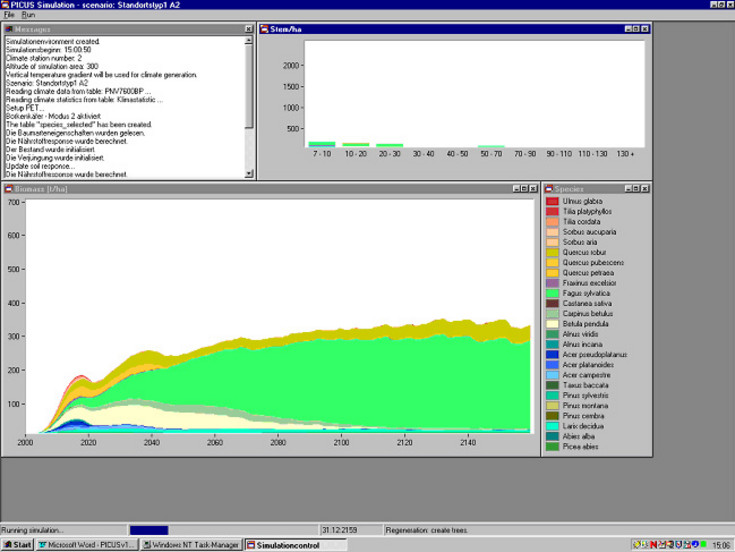PICUS v1.2
PICUS v1.2
The development of the dynamic forest succession simulator PICUS v1.2 is the result of a strength/weakness-analysis of already existing patch models. Herefrom the following specifications for the redevelopment of a new model were derived. Based on the „classic“ patch model approach by Botkin et al. (1972) and Shugart (1984) a three dimensional, spatially explicit model of forest growth and development was designed and implemented with modified formulations especially for the response of tree growth to environmental factors. PICUS simulates a forest as an interactive unit consisting of an array of 10 x 10 x 5 m cells. Interactions between patches are considered with regard to light regime and seed dispersal. Environmental constraints are given by
- temperature: characterized by a heat sum > 5.5 °C and winter minimum temperatures
- water supply: indicated by a soil moisture index
- radiation: implemented as a separate radiation submodel, which distinguishes direct and diffuse radiation, and takes into account shielding effects of surrounding topography
- site nutrient status: implemented as a Mamdani-type fuzzy logic control unit
Climate data are provided by a stochastic weather generator on monthly basis. Left figure below illustrates schematically the model logic of PICUS v1.2.


PICUS v1.2 represents the “typical” patch-model within the PICUS model family and serves as a versatile framework for modifications and further development leading to the model versions PICUS v1.4 and PICUS v2.0. A detailed model description of PICUS v1.2 is given in Lexer and Hönninger (2001) and Lexer (2001).
